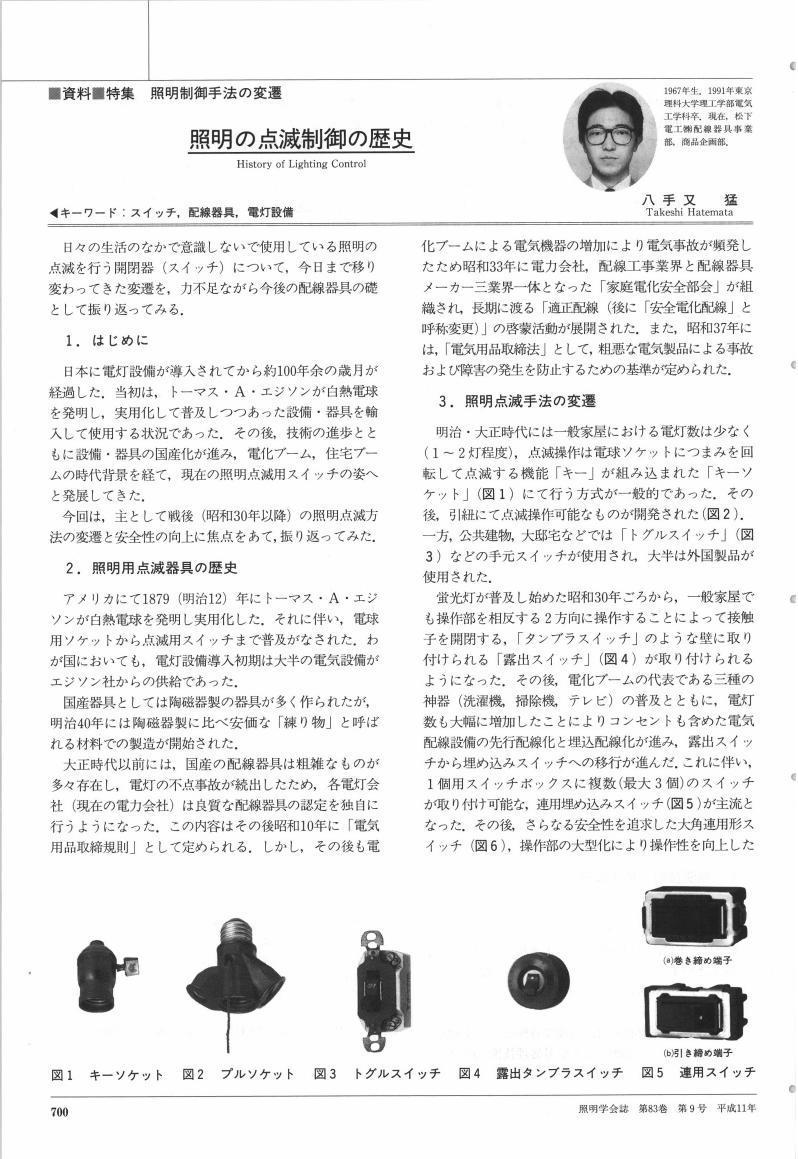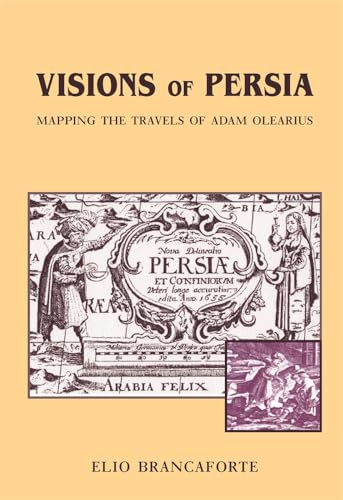- 著者
- Sho Nishiguchi Nagisa Sugaya Kentaro Sakamaki Shunsaku Mizushima
- 出版者
- International Research and Cooperation Association for Bio & Socio-Sciences Advancement
- 雑誌
- BioScience Trends (ISSN:18817815)
- 巻号頁・発行日
- vol.11, no.1, pp.54-61, 2017-02-28 (Released:2017-03-22)
- 参考文献数
- 39
- 被引用文献数
- 2 11
The end-of-life (EOL) care bonus introduced by the Japanese government works as a financial incentive and framework of quality preservation, including advance care planning, for EOL care among nursing home residents. This study aims to clarify the effects of the EOL care bonus in promoting EOL care in nursing homes. A longitudinal observational study using a questionnaire was conducted. We invited 378 nursing homes in Kanagawa prefecture in Japan, a region with a rapidly aging population, to participate in the study. The outcome was the number of residents dying in nursing homes from 2004 to 2014. In a linear mixed model, fixed-effect factors included year established, unit care, regional elderly population rate and hospital beds, adjacent affiliated hospital, full-time physician on site, physician's support during off-time, basic EOL care policy, usage of the EOL care bonus, EOL care conference, and staff experience of EOL care. A total of 237 nursing home facilities responded (62.7%). The linear mixed model showed that the availability of the EOL care bonus (coefficient 3.1, 95 % CI 0.67-5.51, p = 0.012) and years of usage of the EOL care bonus (p < 0.001) were significantly associated with increased numbers of residents dying in nursing homes. Our analysis revealed that the EOL care bonus has the potential to increase the number of residents receiving EOL care in nursing homes over several years. EOL care conferences, physician support for emergency care during off-time, and the presence of an adjacent affiliated hospital may also increase the number of residents receiving EOL care in nursing homes. These results suggest that a government financial incentive may contribute to effective EOL care among nursing home residents in other developed countries with rapidly aging populations.
3 0 0 0 OA 桃の民俗誌 : そのシンボリズム(その三)
- 著者
- 王 秀文
- 出版者
- 国際日本文化研究センター
- 雑誌
- 日本研究 : 国際日本文化研究センター紀要 (ISSN:09150900)
- 巻号頁・発行日
- vol.20, pp.125-171, 2000-02-29
旺盛な繁殖力・生命力をもつものは、同時に不思議な呪力をも持っているが、桃も例外ではない。桃の呪力に関する伝承は、中国の諸史書にみられる。たとえば、古代の帝王や諸侯のあいだで行われた喪式・盟会・進食などの時や貯蔵した氷を取り出す時などに、桃の枝などで不祥を防ぎ凶悪を追い払った。『山海経』にみえる有名な度朔山伝説においては、巨大な桃の木の東北の枝間に鬼門があり、万鬼が出入りする。見張りの神荼・鬱塁の二神はその悪鬼を捕らえて虎に食わすと述べられている。この伝説を受け継いで、桃の呪力が古くから行われてきた追儺式にも用いられているし、中国の門神信仰や日本の鬼門信仰の起源ともなっている。そして、桃は黄泉国の神話において鬼を退散させたことから、桃太郎が鬼が島へ鬼征伐に出かける時にも、その呪力を発揮している。概して、桃は陰に対しての陽であり、死に対しての生であるので、時間的・空間的な境目において、生を扶助する呪力が認められる。
- 著者
- 鈴木 晃志郎 佐藤 信彌
- 出版者
- 首都大学東京 大学院都市環境科学研究科地理環境科学専攻 観光科学専修
- 雑誌
- 観光科学研究 (ISSN:18824498)
- 巻号頁・発行日
- no.3, pp.95-116, 2010-03-30
本研究は、科学社会学の概念モデルであるアクターネットワーク理論を地理学に応用し、鉄道の延伸に伴って生まれたある街の社会史を状況論的に読み解く試みである。かつて太平洋側と日本海側から運ばれる塩の交易ルートにちなんで地名が定着した長野県塩尻市は、明治維新後、養蚕・生糸の生産・流通拠点の一角を担い、文明開化の黎明期を支えた。塩尻の市街化を促したのは、国家的事業として進められた鉄道建設であり、旧中山道に沿う形で延伸してきた中央本線と、北陸方面への大動脈である信越本線であった。鉄道が陸上交通の要として隆盛を極めた時代、二者の結節点に位置する塩尻もまた栄華をきわめ、結果的にそれは、半ば人工的に駅へと依存した中心市街地の形成に繋がった。しかし、そのことが却って、時代の変化に伴う幹線道路の拡張や、大都市近郊のベッドタウンとしての都市改変のいずれをも選択せぬまま、新駅移転とそれに伴う旧中心商店街地区の衰退傾向を座して眺める結果をもたらした。合併によって後年誕生した地元自治体は、旧中心商店街地区の縁辺部に事業所を構え、実質的に中心商店街地区に依存した自治体運営方針から抜けきれないまま、空洞化の進む旧駅前の中心商店街地区へのハコモノ的投資を続けて今日に至った。ここに、国策としての駅舎建設と、鉄道に二重に依存した都市構造が形作られたのである。輸送手段としての鉄道は、もはや地域コミュニティの核としての求心力を失いつつある。今後、自治体を含めた地域コミュニティには、鉄道を核として作り上げた既存の人的ネットワークの維持に留まらず、新規の居住者を増加させるための積極的な施策を提示していくことで、地域コミュニティの再定義をはかる工夫が求められる。
3 0 0 0 OA 照明の点滅制御の歴史
- 著者
- 八手又 猛
- 出版者
- 一般社団法人 照明学会
- 雑誌
- 照明学会誌 (ISSN:00192341)
- 巻号頁・発行日
- vol.83, no.9, pp.700-703, 1999-09-01 (Released:2011-07-19)
- 参考文献数
- 1
3 0 0 0 OA 官報
- 著者
- 大蔵省印刷局 [編]
- 出版者
- 日本マイクロ写真
- 巻号頁・発行日
- vol.1921年12月05日, 1921-12-05
- 著者
- 下村 義弘 夏 亜麗 津田 文香 大賀 久美 横井 麻里 藤村 寛子 藤村 寛子
- 出版者
- 看護理工学会
- 雑誌
- 看護理工学会誌 (ISSN:21884323)
- 巻号頁・発行日
- vol.7, pp.1-12, 2020
浮腫は疾患本来の内的要因に加え,同じ姿勢を維持するといった日常生活の外的要因によって,より一層,進行する.外的要因のなかでも日常生活で起こる可能性の高い下肢のむくみと入浴行為に注目した.ミストサウナ,全身浴,シャワーの3種の異なる入浴法を比較した.直立位タスクで下肢にむくみを誘発し,その後に入浴を行い,回復期を設けてむくみの改善効果を調べた.測定項目は主観評価とふくらはぎ周囲長であった.その結果,すべての入浴方法は回復期終了時点で,タスクによって誘発されたふくらはぎ周囲長はもとに戻らなかった.しかし,主観的不快感は緩和された.また,ミストサウナでは,出浴後の最大周囲長の有意な減少がみられた.入浴方法によってはおもに血液性のむくみに対して異なる影響を与えることが分かった.つまり回復期を長くすると,入浴法によっては客観的な改善効果が認められる可能性がある.
3 0 0 0 OA 京都の漢方医達
- 著者
- 安井 廣迪
- 出版者
- The Japan Society for Oriental Medicine
- 雑誌
- 日本東洋医学雑誌 (ISSN:02874857)
- 巻号頁・発行日
- vol.51, no.5, pp.845-897, 2001-03-20 (Released:2010-03-12)
- 被引用文献数
- 1
3 0 0 0 OA イギリス外交における文化的プロパガンダの考察、一九〇八―一九五六年
- 著者
- 松本 佐保
- 出版者
- 一般財団法人 日本国際政治学会
- 雑誌
- 国際政治 (ISSN:04542215)
- 巻号頁・発行日
- vol.2013, no.173, pp.173_112-173_126, 2013-06-25 (Released:2015-06-09)
- 参考文献数
- 62
Cultural diplomacy and cultural propaganda have been discussed by some scholars of British diplomatic history, but it is not clear what degree of influence these activities had upon the mainstream of diplomacy. This article attempts to explore the importance of cultural diplomacy for Britain in the first half of the twentieth century, including the world wars, by looking at the cases of British policy towards Italy and the United States. It begins by looking at Sir James Rennell Rodd, the British ambassador to Italy between 1908 and1919, who used his cultural diplomacy in order to persuade Italy to join the Allied side during the First World War. He helped to create the British Institute in Florence, which in 1917 came under the Ministry of Information (MOI) as part of the British propaganda effort. Once the war ended the MOI was dissolved, partly because the Foreign Office disliked its aggressive propaganda activities towards foreign countries. However, when it became apparent that Fascist Italy and Nazi Germany, which were more advanced in the field of political and cultural propaganda, were using cultural diplomacy to increase their influence in the world, the Foreign Office reluctantly had to organize some form of propaganda to counter their activities. This led to the establishment of the British Council in 1934, which was, in part, loosely modeled upon the British Institute in Florence. It attempted to concentrate upon purely cultural activities, but with another war approaching this line was breached and the Director, Lord Lloyd, increasingly used the Council for political propaganda and intelligence-gathering. The greatest challenge came in the United States where British propaganda had to avoid the excesses of the First World War and yet still promote Britain`s cause. In this environment the Council`s cultural propaganda became useful by emphasizing the common ethnic and cultural roots of the two countries. In addition, the Council proved useful in the post-war period as its activities could be used to promote democratic values and thus encourage other countries, such as Italy and Greece, to move away from both fascism and communism. This article therefore demonstrates the importance of cultural diplomacy and how it contributed to the mainstream of British diplomacy.
3 0 0 0 古代陰陽寮官人の基礎的研究 : 陰陽家列伝
- 著者
- 宮崎 真由
- 出版者
- 神道史学会
- 雑誌
- 神道史研究 (ISSN:05830702)
- 巻号頁・発行日
- vol.62, no.1, pp.67-115, 2014-04
3 0 0 0 OA 昆虫分野のアマチュア科学者に共通してみられる科学実践継続を可能にする要素
- 著者
- 木村 優里 小川 正賢
- 出版者
- 一般社団法人 日本科学教育学会
- 雑誌
- 科学教育研究 (ISSN:03864553)
- 巻号頁・発行日
- vol.42, no.4, pp.324-334, 2018 (Released:2019-02-02)
- 参考文献数
- 7
The current study is one of the hypothesis verification studies of previous work (Kimura, 2017), in which a hypothetical model, explaining why amateur scientists could continue their scientific practices, was generated through a qualitative research method, the Modified Grounded Theory Approach (M-GTA). The present study examined common elements enabling Japanese amateur entomological scientists to continue their scientific practices in the hypothetical model, by using a quantitative research method. A total of 70 amateur entomological scientists voluntarily participated in a questionnaire survey, consisting of 3 attribute questions and 19 main questions, which identified a total of 21 essential elements (‘categories,’ ‘concepts,’ and ‘processes’) of the model. The data obtained was analyzed quantitatively. The findings revealed that the 21 elements could be divided into three groups: Thirteen elements were shared among the Japanese amateur entomological scientists, whereas 5 elements were not, while the remaining 3 elements were in-between.
- 著者
- Elio Christoph Brancaforte
- 出版者
- Harvard University Press
- 巻号頁・発行日
- 2003
3 0 0 0 OA 台風等の顕著な気象現象を対象とした深層表現学習に基づくビッグデータ解析
台風は気象学的にも社会的にも重要な現象であるが、その勢力や構造に関する分析はこれまで専門家の人手による方法に頼ってきた。そこで本研究は、台風に関する大規模衛星画像データセットに機械学習(特に深層学習)を適用することで、ビッグデータという視点から台風を分析する新しい手法を提案する。取り組んだテーマは「台風階級の分類」「台風中心気圧の回帰」「台風から温帯低気圧の遷移」「時系列モデルへの拡張」の4つである。特に「台風から温帯低気圧への遷移」に関しては、深層学習ベースの新指標「温低遷移指数」を提案して気象庁ベストトラックと比較したところ、気象庁のタイミングが平均して半日ほど遅いとの結果を得た。
3 0 0 0 OA 東京低地における工場分布の変遷と21世紀初頭の工場跡地の利用状況
- 著者
- 遠藤 毅
- 出版者
- Tokyo Geographical Society
- 雑誌
- 地学雑誌 (ISSN:0022135X)
- 巻号頁・発行日
- vol.116, no.5, pp.593-626, 2007-10-25 (Released:2009-11-12)
- 参考文献数
- 47
- 被引用文献数
- 2 4
The Tokyo Lowland situated in the eastern part of Tokyo Metropolis was composed of extensive paddy fields until the end of the Edo era in 1868, then became a major industrial area from the beginning of the Meiji era due to the industrialization project of the early Meiji Government. The purpose of this paper is to clarify the changes in the industrial area in the Lowland since the beginning of the Meiji era, and to investigate the recent use of former factory sites following the relocation and closing of factories since around 1960.In the early part of the Meiji era, the industrial area only occupied the western part of the Lowland, the estuary of the Sumida River, and the junction of the Shakujii River and the Sumida River, and the main factories belonged to the shipbuilding and military industries. Then, over the period of two major wars, Shino-Japanese War (1894-1895) and Russio-Japanese War (1904-1905), the industrial area continued to be enlarged. At the end of the Meiji era, in 1912, many factories were developed along canals throughout the Kohtoh Area. Furthermore, the industrial area was developed throughout the Lowland during the period straddling World War I (1914-1918) and World War II (1941-1945).Although the industrial activity in the Lowland stopped for a several years from the end of the World War II in 1945, it started again with the outbreak of the Korean War, in 1950, and advanced remarkably mainly in the heavy and chemical sectors.However, this extreme industrial development brought to the Lowland the overpopulation and the public nuisances such as air-pollution, noise, and vibration from plants and manufacturing sites. To reduce these problems, the National Government and the Tokyo Metropolitan Government took such measurements as restricting the construction of new factories and strengthening regulations on the operations of factories. The regulations to prevent public nuisances were very costly to factory operators.As a result, the number of factories in the Lowland stopped increasing around 1960, and the number decreased rapidly from 1961 to 1975 because of relocation to other countries or ceasing manufacturing operations.Many former factory sites have been converted to other uses, mainly facilities for citizens such as condominiums, general residential areas, parking lots, schools, and parks. In particular, mainly at the sites of former metal industry, timber, and chemical industries, conversion to residential quarters has been remarkable. Among the new uses changed from former factory sites, the residential use occupies more than 50%.However, the change in land use from former factory sites to a residential quarter has brought problems throughout the Lowland area such the blocking of sunlight to existing houses due to the construction of housing complexes, and soil pollution caused by past industry activity. To reduce the problem of the blocking of sunlight to existing houses, each ward government has regulated the construction of housing complexes, and to reduce the problem of soil pollution, the National Government has promulgated the Soil Contamination Countermeasures Law.In addition to these problems, the extension of the subway network to the Lowland area in recent years has promoted an expansion of the residential quarter. This rapid expansion has led to a shortage of public institutions such as elementary and junior high schools. Furthermore, most of the Lowland area is permanently below sea level due to land subsidence, although the land is protected by extensive dikes and drainage systems to prevent disasters related to high tides and flooding.It is essential to solve these problems related to land use in this Lowland area.
3 0 0 0 OA Europeanaネットワーク協議会の総会(Europeana 2019)参加記
- 著者
- 時実 象一
- 出版者
- デジタルアーカイブ学会
- 雑誌
- デジタルアーカイブ学会誌 (ISSN:24329762)
- 巻号頁・発行日
- vol.4, no.3, pp.300-304, 2020-07-01 (Released:2020-08-24)
- 参考文献数
- 29
3 0 0 0 OA 公開セミナ 「ミュージアムとジャパンサーチ―その可能性と課題―」
- 著者
- デジタルアーカイブ学会事務局
- 出版者
- デジタルアーカイブ学会
- 雑誌
- デジタルアーカイブ学会誌 (ISSN:24329762)
- 巻号頁・発行日
- vol.4, no.3, pp.311, 2020-07-01 (Released:2020-08-24)
3 0 0 0 OA 公開セミナ「ミュージアムとジャパンサーチ―その可能性と課題―」参加報告
- 著者
- 中村 美里
- 出版者
- デジタルアーカイブ学会
- 雑誌
- デジタルアーカイブ学会誌 (ISSN:24329762)
- 巻号頁・発行日
- vol.4, no.3, pp.312-313, 2020-07-01 (Released:2020-08-24)
3 0 0 0 OA デジタルアーカイブ学会ウェブ懇談会に参加して
- 著者
- 武田 剛朗
- 出版者
- デジタルアーカイブ学会
- 雑誌
- デジタルアーカイブ学会誌 (ISSN:24329762)
- 巻号頁・発行日
- vol.4, no.3, pp.314, 2020-07-01 (Released:2020-08-24)
- 参考文献数
- 5



